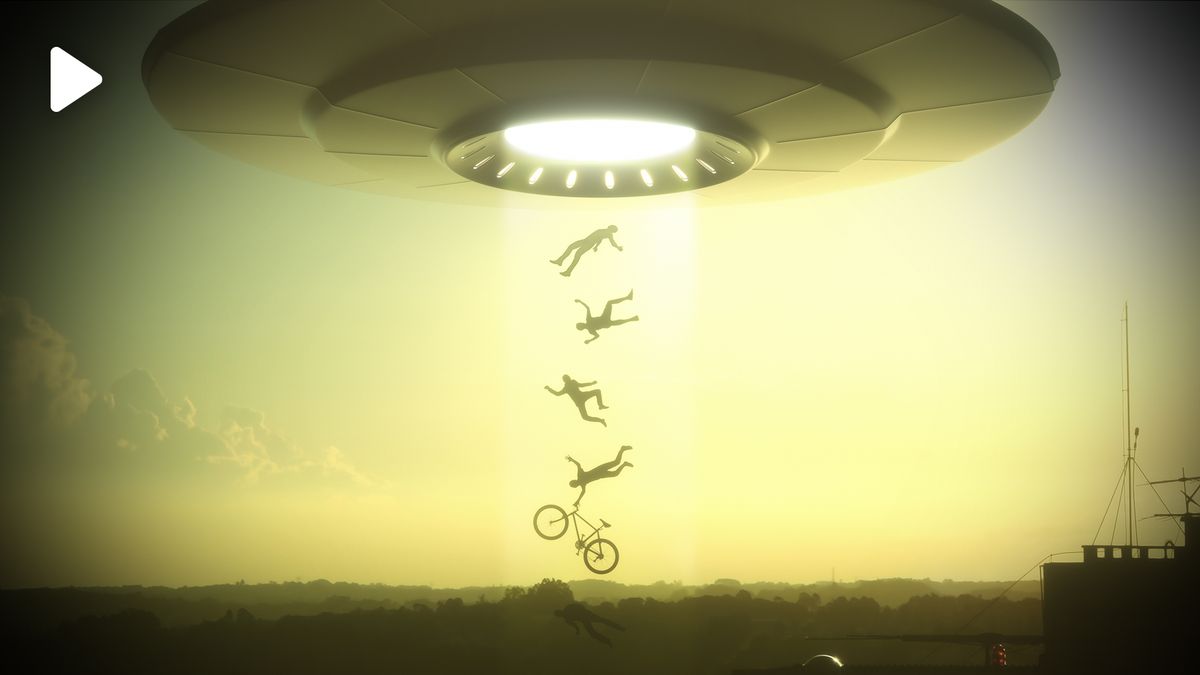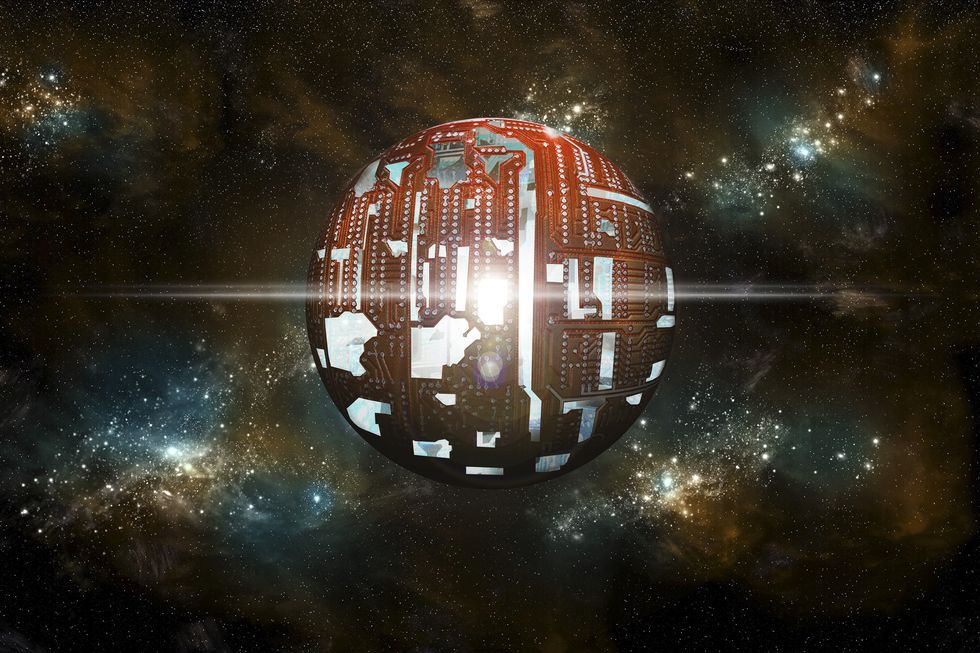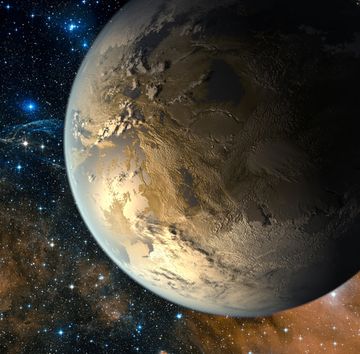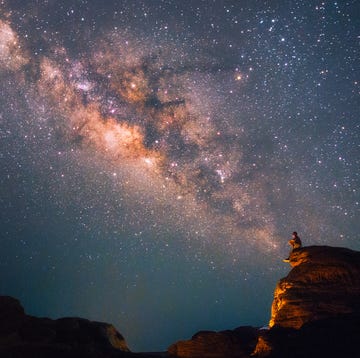- Searching for evidence of technological civilizations in space may be more straightforward than searching for life.
- NASA has awarded funding to “technosignature” hunters that will create a detailed technosignature library.
- However, skeptics believe that genuine, two-way communication between us and aliens is nearly impossible: humanity may be long gone before it’s even feasible.
In the summer of 1950, while Italian-American physicist Enrico Fermi was discussing the possibility of alien life with fellow physicists over lunch, he ultimately posed a question that we now associate with his eponymous Fermi paradox: “Where is everybody?”
To answer the tantalizing question, scientists in search of extraterrestrial intelligence (SETI) have been scouring exoplanets for “biosignatures,” specific chemicals or combinations of chemicals alluding to the possibility of past or present life. Historically, biosignatures tend to produce false positives, though. For instance, a study that ran in the Journal of the Geological Society in 2022 debunked a lot of the hoopla around Mars’ “lifelike” microbes, as it identified a wide array of chemical processes taking place on the Red Planet’s rocks; these may have produced structures resembling bacterial cells and carbon-based molecules, giving the illusion of “life.”
Maybe we’ve been looking for aliens all wrong. And that’s precisely why researchers have been warming up to another type of signature in their hunt for extraterrestrial life: the so-called “technosignatures.”
What Are Technosignatures?
Technosignatures are evidence of technology that alters its environment in ways that we humans can detect (think: radio signals, laser emissions, megastructures, or pollutants like carbon dioxide and methane).
Say you want to discover proof of an advanced civilization on one of the 5,197 exoplanets out there; you can look for excess heat coming from their nearby stars, and deduce that technology like solar panels are capturing starlight. Perhaps easier, we could recruit one of Earth’s big space telescopes to pick up unusual radio signals from space. SETI Institute’s Allen Telescope Array in California, the Arecibo Observatory in Puerto Rico, the Robert C. Byrd Green Bank Telescope in West Virginia, and the Parkes Observatory in New South Wales, Australia, are only some examples of telescopes on alert for technosignatures right now.
In a paper he co-authored and published in The Astrophysical Journal Letters in April 2022, Adam Frank, a professor of astrophysics at the University of Rochester in New York City, compared biosignatures with technosignatures, heavily favoring the latter. “It’s possible that evidence of technology might be more numerous and more easily detected,” Frank tells Popular Mechanics. In fact, the search for technosignatures is quite simple, he says. “Any technology that an alien civilization uses is going to be based on the same physics and chemistry we use.”
Frank may as well be a veteran SETI researcher himself. He has already developed a mathematical model to show how a technologically sophisticated civilization and its planet might develop or collapse together; classified hypothetical “exo-civilizations” based on their ability to exploit energy; and created a thought experiment pondering if Earth once harbored a pre-human industrial civilization.
Eliminating False Positives
Frank has also received a grant from NASA to create an online technosignatures library. His immediate work will focus on technosignatures on the surface of planets, such as heat emitted from solar panels, and those in their atmospheres, like industrial chemicals.
Say the research one day helps detect a technosignature from Kepler-62f, an exoplanet 990 light years away from Earth that is roughly 40 percent larger and orbits a star much cooler than our own sun. What happens next?
“If an observer uses our technosignature library and finds something that matches ... well, then the fun begins,” Frank says. First, a long period of checking and rechecking the signature starts. Then, we may want to make sure that the signature was the result of actual technology and not some natural process on the surface of the planet. This is a must as the technosignature community suffers from its own false positives.
Several years ago, the dimming of Tabby’s star, a yellow-white dwarf star about 1,280 light years away from Earth, led to speculation about an alien megastructure possibly blocking its light—but it was soon speculated it was actually small particles of dust orbiting Tabby that were stealing its thunder. The University of Columbia is only the latest scientific institution to cast doubt on this alien megastructure scenario, suggesting that it is a disk made up of layers of ice, gas, and carbonaceous rock accumulating from a nearby melting exomoon that causes these plunges in the star’s light curve.
Meanwhile, the almighty Wow! Signal—the two-and-a-half-minute radio signal that Ohio State University’s Big Ear radio telescope picked up from deep space in 1977—remains to this day the most promising candidate radio signal for SETI exploration. But chances are, the signal can be explained as an intercepted spacecraft communication. “The scientific community has been developing protocols for the transparent release of any definite signature,” Frank says. This means that only when there is robust belief in the technosignature’s veracity will the world find out about it. “And then history will be forever changed,” Frank says.
“I truly believe that we are not alone in the universe. It’s too vast for life to form only on some random planet in some random galaxy,” Stephen Holler, an associate professor of physics at Fordham University in New York City, tells Popular Mechanics. Holler thinks the theory of technosignatures is viable.
Naturally, though, there’s a “but.”
Can We Find Aliens Before It’s Too Late?
For one thing, our own technosignatures wouldn’t be obvious to alien civilizations.
“Given that our galaxy is over 100,000 light years across, we can only be known in a small fraction of the available space,” Holler says. We also lack anything large-scale enough to alter the space around Earth—say, a megastructure like a Dyson Sphere that could harness the sun’s enormous energy. Plus, most of the significant changes to Earth’s atmosphere have taken place within just the last 100 years, Holler adds. “The volume of Homo sapiens’ reach is still small.”
“Assuming an extraterrestrial civilization has evolved like humanity, then their detectable volume of technologically produced signatures is equally small and the probability of overlapping our volume is smaller still,” Holler continues.
Plus, given that we cannot survive traveling at the speed of light—which runs at a ferocious 670 million miles per hour—either we or the aliens need to find a way to travel faster than the speed of light. That is, if extraterrestrials ever want to meet us.
But maybe there is some light at the end of the tunnel.
In March 2022, Frank co-authored a paper that ran in The Planetary Science Journal. This showed how extraterrestrial civilizations could detect certain chemicals we use in air conditioners and packaging, as they might use the same chemicals to “terraform” their planet. “We are still in the early stages of our work, but we have produced some cool results. We might even see the chemicals using the James Webb Space Telescope if we get lucky,” Frank says.
Problem is, by the time aliens detect these chemicals, our species may have already died off, according to Holler. “We’ve been on the precipice of extinction since the dawn of the nuclear age, and anthropogenic climate change threatens the longevity of humanity,” he says.
Genuine, thrilling, two-way communication may be a pipe dream given all these obstacles.
“Even if we find and confirm the technosignature, we may not ever have a chance to ‘talk’ with its originators, and there’s no guarantee that the civilization still exists,” Holler explains. But if that extraterrestrial colony does exist, it’s solid proof that—unlike us—it did not set itself into a spiral of self-destruction. “Hopefully, aliens will have done better than us in that regard,” Holler says.
Stav Dimitropoulos’s science writing has appeared online or in print for the BBC, Discover, Scientific American, Nature, Science, Runner’s World, The Daily Beast and others. Stav disrupted an athletic and academic career to become a journalist and get to know the world.














